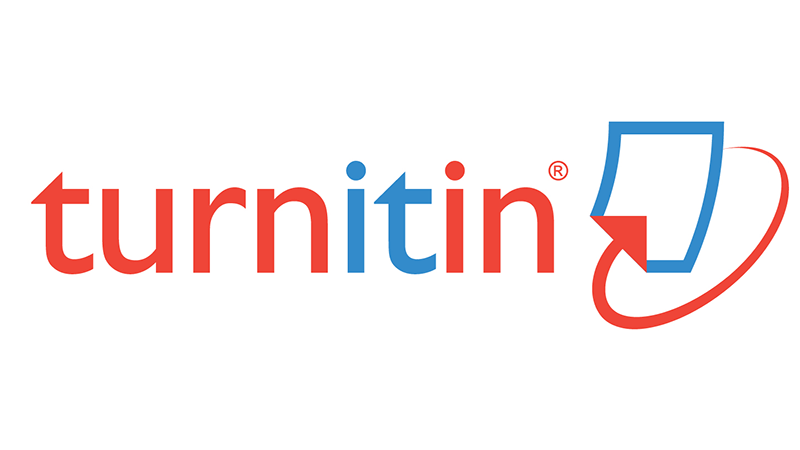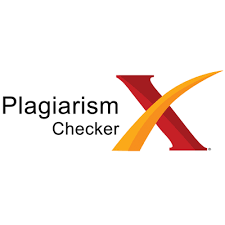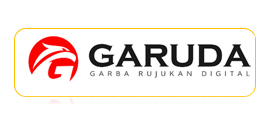PENGEMBANGAN MODEL PEMBELAJARAN READING REPORT DALAM PEMBELAJARAN SEJARAH UNTUK MENINGKATKAN KEMAMPUAN BERPIKIR KRITIS DAN HASIL BELAJAR SISWA KELAS XI IPS 2 MA NURUL ISLAM MOJOKERTO
Abstract
This research aims to produce a learning model developed based on needs analysis, as well as to determine the level of validity and effectiveness of the learning model with the Japanese occupation in learning history in class XI IPS MA Nurul Islam Mojokerto. The subjects in this research and development are content experts, model experts and students of class XI IPS 2 Nurul Islam Mojokerto. This research and development method uses the media development model used is the ADDIE model, consisting of five stages which include analysis, design, development, implementation and evaluation. Based on the data analysis, the results of material validation get a percentage of 72.5 percent, while the results of learning model validation get a percentage of 100 percent. The results of the effectiveness of the product on learning outcomes in small groups got an N-Gain value of 0.85, while large groups got an N-Gain value of 0.72. The results of the effectiveness of the product on critical thinking skills in the small group got an N-Gain value of 0.86 while the large group got an N-Gain value of 0.80. Based on the N-Gain value, it can be concluded that the Reading Report-based learning model is valid and very effective for use in history learning.
Penelitian ini bertujuan untuk menghasilkan model pembelajaran yang dikembangkan berdasarkan analisis kebutuhan, serta untuk mengetahui tingkat kevalidan dan keefektifan model pembelajaran dengan konten masa pendudukan jepang di Indonesia pada pembelajaran sejarah di kelas XI. IPS MA Nurul Islam Mojokerto. Subjek dalam penelitian dan pengembangan ini adalah ahli materi, ahli media dan siswa kelas XI IPS 2 MA Nurul Islam. Metode penelitian dan pengembangan ini menggunakan Model pengembangan media yang digunakan adalah model ADDIE, terdiri dari lima tahapan yang meliputi analisis (analysis), desain (design), pengembangan (development), implementasi (implementation) dan evaluasi (evaluation). Berdasarkan hasil analisis data, hasil validasi materi mendapatkan persentase sebesar 72,5 persen, sedangkan hasil validasi model pembelajaran mendapatkan persentase sebesar 100 persen. Hasil keefektifan produk terhadap hasil belajar pada kelompok kecil mendapat nilai N-Gain sebesar 0,85, sedangkan kelompok besar mendapat nilai N-Gain sebesar 0,72. Hasil keefektifan produk terhadap kemampuan berpikir kritis pada kelompok kecil mendapat nilai N-Gain 0,86 sedangkan kelompok besar mendapat nilai N-Gain sebesar 0,80. Berdasarkan nilai N-Gain tersebut dapat disimpulkan bahwa model pembelajaran berbasis Reading Report valid dan sangat efektif untuk digunakan dalam pembelajaran sejarah.
Keywords
Full Text:
PDFReferences
Akbar, S. (2013). Instrumen perangkat pembelajaran. Remaja Rosdakarya
Amboro, K. (2015). Membangun Kesadaran berawal dari pemahaman: Relasi pemahaman sejarah dengan kesadaran sejarah mahasiswa. Historia, 3(2), 109–118.
Cahyadi, R. A. H. (2019). Pengembangan bahan ajar berbasis Addie Model. Halaqa: Islamic Education Journal, 3(1), 35–42. https://doi.org/10.21070/halaqa.v3i1.2124
Colley, B. M., Bilics, A. R., & Lerch, C. M. (2012). Reflection: A key component to thinking critically. The Canadian Journal for the Scholarship of Teaching and Learning, 3(1). https://doi.org/10.5206/cjsotl-rcacea.2012.1.2
Fisher, A. (2009). Berpikir kritis: Sebuah pengantar. Erlangga.
Hasan, S. H. (2010). The development of historical thinking and skills in the teaching of history the senior school curiculum in indonesia historia. Internasional Journal of History Education, XI(2), 3.
Jalinus, N. A. (2016). Media dan sumber pembelajaran. Kencana.
Kustandi, C. (2013). Media pembelajaran manual dan digital (2nd ed.). Bogor Ghalia Indonesia.
Lunenburg, F. C. (2011). Critical thinking and constructivism techniques for improving student achievement. National Forum of Teacher Education, 21(3), 1–9. http://www.nationalforum.com/Electronic Journal Volumes/Lunenburg, Fred C. Critical Thinking & Constructivism V21 N3 2011 NFTJ.pdf
Munadi, Y. (2013). Media pembelajaran: Sebuah pendekatan baru. GP Press.
Samani, M. (2012). Profesionalisasi pendidikan. UNESA UNIVERSITY PRESS.
Sardiman. (2012). Pembelajaran Sejarah dan Pembangunan Karakter Bangsa, dalam Hansiswany Kamarga dan Yani Kusmarni (Ed), Pendidikan Sejarah Untuk Manusia dan Kemanusiaan: Refleksi Perjalanan Karir Akademik Prof. DR. Said Hamid Hasan, MA. Bee Media.
Sugiyono. (2013). Metode penelitian pendidikan: Pendekatan kuantitatif, kualitatif, dan R&D. Alfabeta.
Sugiyono. (2015). Metode Penelitian Pendidikan Pendekatan Kuantitatif,. Kualitatif, dan R&D. Alfabeta.
Suparno & Yunus, M. (2003). Keterampilan Dasar Menulis. Universitas Terbuka.
Wati, E.R. (2016). Ragam media pembelajaran : Visual-audio visual-komputer-power point-internet-interactive video (A. Jarot (ed.)). Kata Pena.
DOI: http://dx.doi.org/10.17977/um0330v6i1p104-116
Refbacks
- There are currently no refbacks.

This work is licensed under a Creative Commons Attribution-ShareAlike 4.0 International License.
Editorial office:
History Department, Faculty of Social Science,
Universitas Negeri Malang
Jl. Semarang No.5 Kota Malang 65145,
Phone. (0341) 551312,
email: jpsi@um.ac.id
Website: http://journal2.um.ac.id/index.php/sejarah/index
E-ISSN 2622-1837

This work is licensed under a CC BY SA 4.0.








